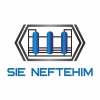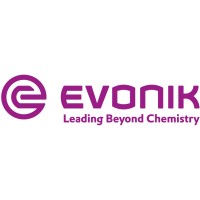-
ProtAgon™ 4G is the latest generation of Grace’s propylene maximization technology. Propylene yields of over 12wt% have been achieved with this catalyst technology. ProtAgon™ 4G is manufactured using the Grace EnhanceR™ Technology Platform, and is an extension of the ProtAgon catalyst family, which is the market leader in the EMEA region. ProtAgon™ catalysts bring the following performance benefits to unit operations and product quality: • ...
-
Operate in higher propylene mode without changing your base catalyst. PROvantage olefin/octane enhancement additive provides refiners with the flexibility to operate in a high propylene mode without the activity dilution of the base catalyst inventory normally associated with high levels of traditional ZSM-5 additives. Why PROvantage works PROvantage contains several different types of active acid site components all in close proximity. The proper balance of these sites efficiently ...
-
PURASPEC CLEAR Chloride guards
Chlorides in a refinery. Where does it come from? Chlorides are introduced into the refinery flowsheet in several ways. Some crude sources can bring both inorganic and organic chloride content. Desalter processes and chemical additives are used to remove chlorides and prevent corrosion and fouling caused by these chlorides. The other major source is from the Catalytic Reforming Unit (CRU). This unit upgrades straight run naphtha value for use in the gasoline pool or as petrochemical ...
-
Quantifying FCC catalyst accessibility
Accessibility is related to the mass-transfer characteristics of an FCC catalyst. Albemarle has developed a quantitative laboratory test that measures the accessibility of FCC catalyst particles: the first such measurement in the history of FCC. This test has dramatically altered the way refiners select and evaluate catalysts. Moreover, it is another example that demonstrates Albemarle’s continuing leadership in maximizing and exploiting the benefits of FCC catalyst mass ...
-
Quantifying FCC gasoline sulfur reduction
Refiners everywhere have to comply with government-mandated fuel specifications, in particular dramatically lower gasoline sulfur levels. While post-treating remains an option, the associated octane loss creates additional constraints for refiners, particularly those who are hydrogen limited. Regardless of whether your refinery is post-treatment or hydrogen constrained, a gasoline sulfur reduction additive such as Albemarle’s RESOLVE line can reduce reliance on post-treating ...
-
Topsoe´s ReFRESH™ technology offers you the opportunity to use Haldor Topsoe catalysts twice for maximum economic benefit by reactivation of the catalytically active sites. Activity up to 95+ % of fresh catalyst is restored. The technology is commercially proven with more than 65 references and applicable for spent BRIM® and HyBRIM™ catalysts. The ReFRESH™ technology is a specialized method of metal redistribution – available only from Topsoe ...
-
ResidCrackeR™ 4G is the latest generation of Grace’s coke selective bottoms cracking ResidCrackeR™ catalyst family for residue FCC feed applications. ResidCrackeR™ 4G is an extension of the ResidCrackeR™ catalyst family, a component of the EnhanceR™ technology platform, which is the market leader in the EMEA region. ResidCrackeR™ 4G incorporates new technologies that were developed during the extensive Grace R&D program that was ...
-
RIVE® FCC catalyst represents the first and only use of ordered mesoporosity in FCC zeolites or catalysts, and is capable of providing a step change in value for many FCC operations. The result: enhanced diffusion of hydrocarbons both into and out of the catalyst particle. This adds options to process heavier feeds, reduce feedstock costs, circulate more catalyst, and preserve valuable products increasing operating flexibility for the refiner.
-
SIE NEFTEHIM: aiming the challenges of the future
Based in the south Russia Krasnodar innovative chemical technology company - Scientific Industrial Enterprise (SIE) Neftehim LLC is one of Russia’s hundred most competent companies in its field. The company presents ISOPLAT, new efficient technology for the environmentally friendly high-octane gasoline components production with ultra-low aromatics and benzene. OILMARKET magazine met with the SIE NEFTEHIM President and CEO, Alexander Nikitovich Shakun. The development of ...
-
Slash your hydrogen production costs
By utilizing low value, excess fuel gas, you can reduce your consumption of costly traditional hydrogen plant feedstocks, such as natural gas, LPG, butane or naphtha. Upgrading fuel gas produced onsite is a proven way to significantly cut the cost of your hydrogen production. Refinery fuel gases are an attractive feedstock option. However, impure RFG feeds can cause problems in the feedstock purification section. With Haldor Topsoe’s fuel gas hydrotreating (FGH) technology, ...
-
SMOOTHFLOW from Albemarle offers a solution to FCC unit fluidization and circulation problems. Fluidization problems sometimes begin suddenly, often as the result of an unexpected process upset causing significant catalyst losses and possibly mechanical damage inside the unit. The finest catalyst particles in the circulating inventory are usually lost first, which results in a sharp increase in the equilibrium catalyst average particle size, Figure 1 In other cases, fluidization ...
-
Optimal SOx reduction without rare earth for partial- and full-burn units. SOx reduction additives are designed to capture and remove the oxidized sulfur compounds present in the FCC unit regenerator and release them in the FCC riser. On release, the sulfur exits the FCC unit as hydrogen sulfide along with the cracked products in the reactor effluent. The hydrogen sulfide is processed in the gas plant downstream of the FCC unit. Extensive studies in the 1970s looked at the ...
-
Squeeze more value out of your FCC gasoline
As sulfur legislations tighten, it becomes more difficult for refiners to meet the specifications from their FCC gasoline post-treatment units. Particularly the octane number poses challenges, since some olefins are simultaneously being hydrogenated. The consequent loss of octane often prevents the refineries from achieving maximum value. Topsoe’s series of HyOctane™ catalysts are specifically developed for all steps in FCC gasoline post-treatment applications. ...
-
Excel® Technology: The Sustainable Solution for HydroProcessing Catalysts
Unveil the path to sustainable catalyst processes with Excel® Rejuvenation Technology! Join us as we delve into the art of catalyst rejuvenation, uncovering the means to propel your processes towards enhanced sustainability and waste reduction. Learn how to steer your operations away from wasteful practices and embrace sustainability using Evonik's Excel® Hydroprocessing Catalysts solutions. Our certified Life Cycle Assessment (LCA) lays bare the potential emissions you can ...
-
Structured Catalyst for Steam Methane Reforming
Join this webinar to learn about the benefits of ZoneFlow Structured Catalyst for Steam Methane Reforming. Honeywell UOP and ZoneFlow Reactor Technologies recently conducted pilot plant testing of the ZoneFlow Structured Catalyst in a large-scale pilot plant at Université Catholique de Louvain in Louvain-la-Neuve, Belgium. In this free webinar, you will have the opportunity to learn about the technology and benefits that were seen in the pilot test run at near-commercial levels: • ...
-
Navigating Complexities of Renewables Processing
Refineries are shifting away from producing traditional fuels to remain relevant, compliant and profitable. Join us to learn more about recent developments in renewable feedstocks processing. In this webinar from Ketjen, you will gain an understanding of the regulations and drivers that shape the renewables market. You will also have a chance to learn about operational challenges you may face while processing feedstocks with various amounts and grades of HVO or waste plastic ...
-
Optimizing the value of your unloaded catalyst
The metals contained in spent catalysts offer a valuable follow-on revenue source, but how can you be sure to achieve a fair settlement or receive top dollar? You also need to balance demands of sustainability and lowered environmental impact with ease of recovery and settlement. This webinar gives you an introduction to the precious and base metal management cycle in catalysts and specifically provides you with tips for ensuring a high quality and accurate precious metal settlement, ...
-
An introduction to Sinopec Hydrocracking Technologies
This webinar gives you an overview and understanding of hydrocracking and its applications, with an emphasis on technologies and catalysts developed by Sinopec and its research arm, Sinopec Fushun Research Institute of Petroleum and Petrochemicals (Sinopec FRIPP). You will first get an introduction to hydrocracking including feed processing and target output products. Commercial considerations include market share and reference installations such as 40 hydrocracking units designed ...
-
Technologies to enhance Ethylene production
In this presentation, three technologies will be introduced. This first is swirling element radiant tube (SERTTM) technology for steam cracking furnaces. In this technology, you will find how heat transfer theory is applied to overcoming the challenges of cracking pyrolysis to meet targets. Successful commercial cases will demonstrate the technical advantages of SERTTM technology. Cracking furnaces with SERTTM technology have longer operating days, lower tube wall temperature ...
-
High-Performance Tail-Gas Treating
Discover the benefits of applying the latest technology in modern, low-temperature Shell Claus offgas treating (SCOT™) units. See how next-generation, low-temperature SCOT catalysts can help extend cycle life, lower energy costs and ensure regulatory compliance, even with the most difficult feeds and conditions. In this webinar you will: - Learn why modern tail-gas treating units are being designed without an inline burner, and the impact this has on inlet temperatures and, ...
-
Maximising naphtha through hydrocracking: Refinery of the future
Globally the demand for petrochemicals is increasing at rates nearly 1.5 times GDP. In regions where there is a heavy investment in large-scale para-xylene capacity there is a significant demand for naphtha. However not all naphtha is suitable to produce aromatics. Heavy naphtha is required, but it is in limited supply. This is where the Honeywell UOP UnicrackingTM process becomes the key enabler to petrochemical production. By installing one, or a combination of Unicracking ...


























